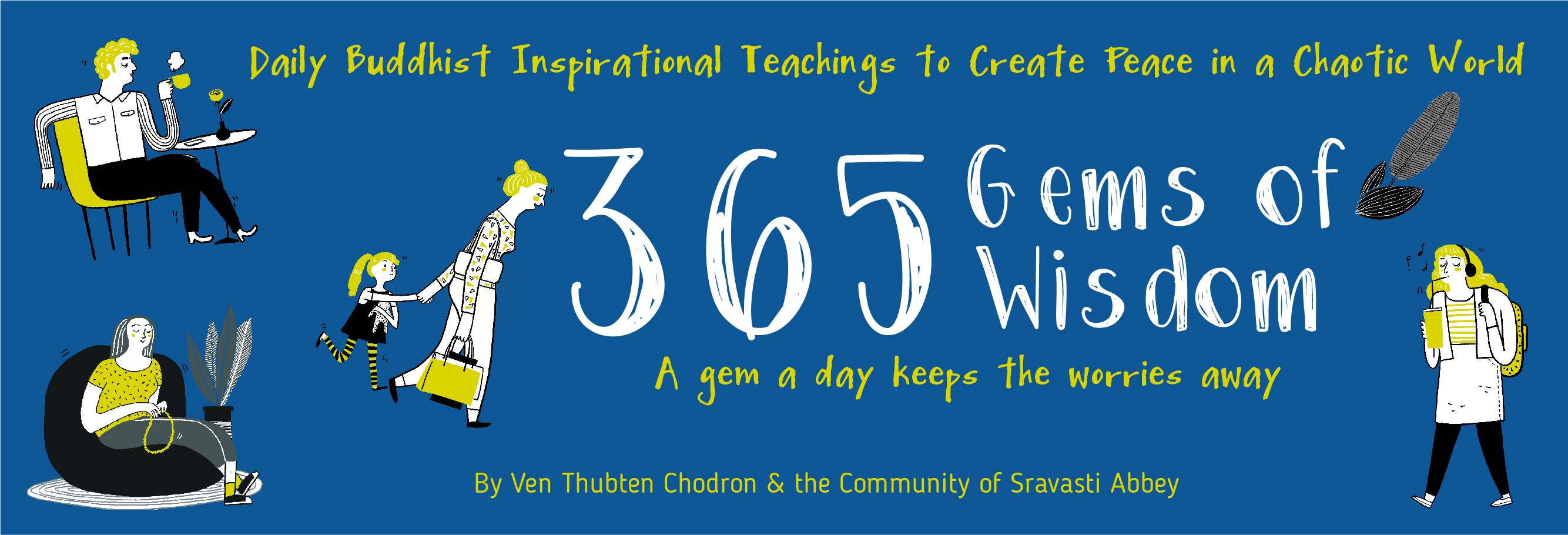April 15 : Mindfulness of the Body
Right mindfulness involves mindfulness of the body, feelings, mind, and phenomena. One starts with mindfulness of the body and begins by being aware and careful about what our body is doing during the day. It is holding in our minds the way we would like our body to be engaged in virtue and always being aware of what our body is actually doing. When we are walking, we try to be aware of walking, and not have our mind always be fifteen steps ahead of us. If we are working in the garden or the kitchen or doing something else, we are aware of what our body is doing and how we are moving in space.
This can also involve observing our speech and being aware of the volume and tone of our voice. Are we talking at an appropriate time and in an appropriate place? It is through this practice of being aware of what our body is doing throughout the day that our energy gets calmed down. You will see, especially in the Theravada monasteries and Chinese monasteries, people are practising this and being aware of how they are moving through space, how they are speaking, and when they are speaking, it calms your energy and it also calms the environment. Instead of everybody frantically running around doing this and that, not paying attention to where they are, calling across the yard, running to get this and that, they are walking at a reasonable pace being aware of what they are doing and where they are going and what is happening. It brings peace to the environment, and peace to one’s physical energy. That makes the mind much more peaceful as well. This kind of mindfulness of the body in daily actions is a core practice in monastic living, a very important one.
We must also be aware of what our body is doing in all four positions — sitting, standing, lying down, and walking. Mindfulness of the body includes understanding what the body is, what its causes are, what its nature is, and what its results are. The purpose of doing this is to get an understanding of what our body is, free from the defilement of attachment and free from the defilement of aversion.
Rather than getting into thinking that this body is beautiful, and my body is going to bring me the ultimate pleasure trip, we let go, but we also let go of the trip that my body is evil and that it is sinful, and I have got to punish it and that I am not worthwhile. Both of those views are to be abandoned because they are both unrealistic ways of seeing the body. The body is just what it is. In mindfulness of the body, we are trying to see it for what it is. Then based on that, we can make wise decisions about how to practise and what is valuable in our lives.
“365 Gems of Wisdom” e-book is out now!

